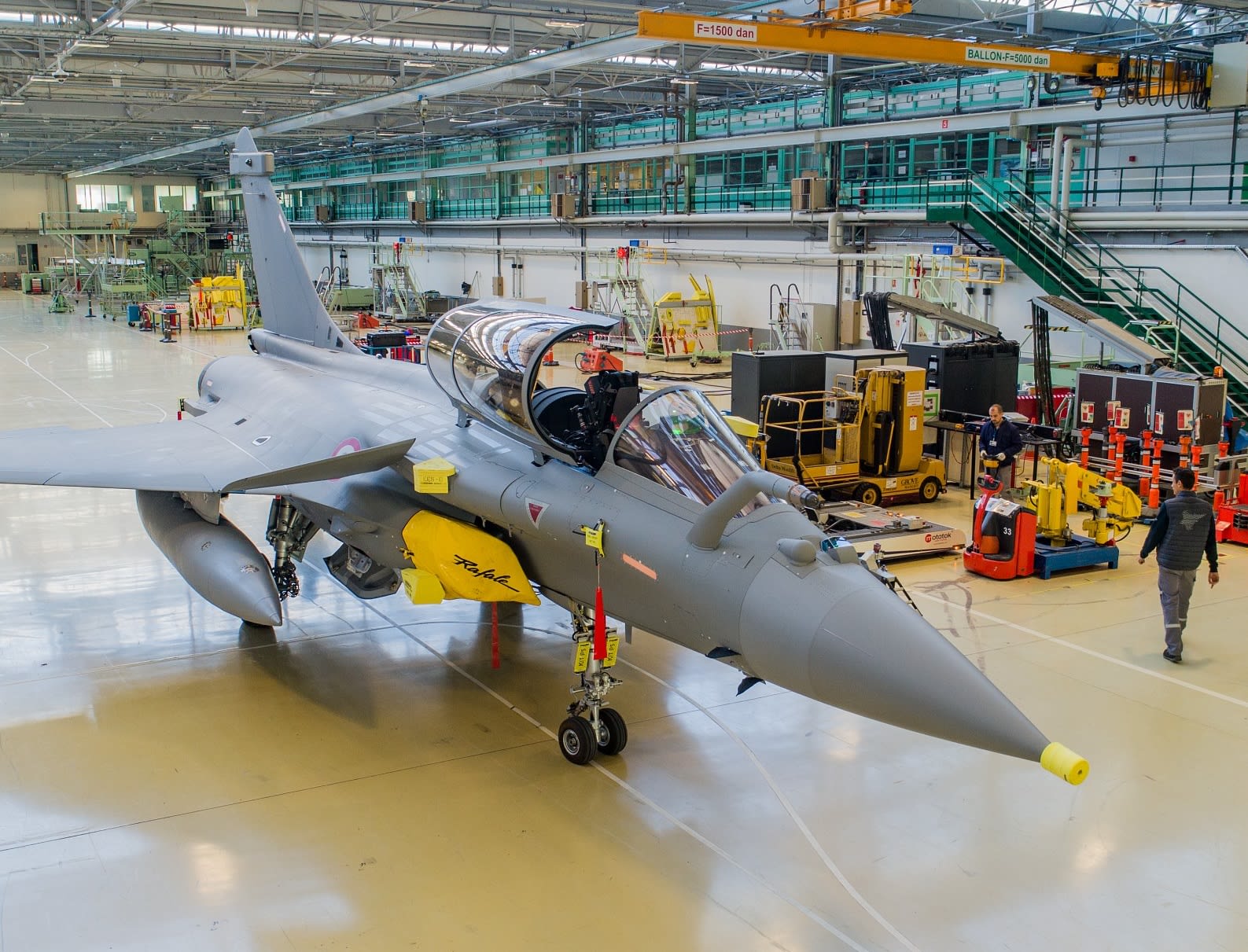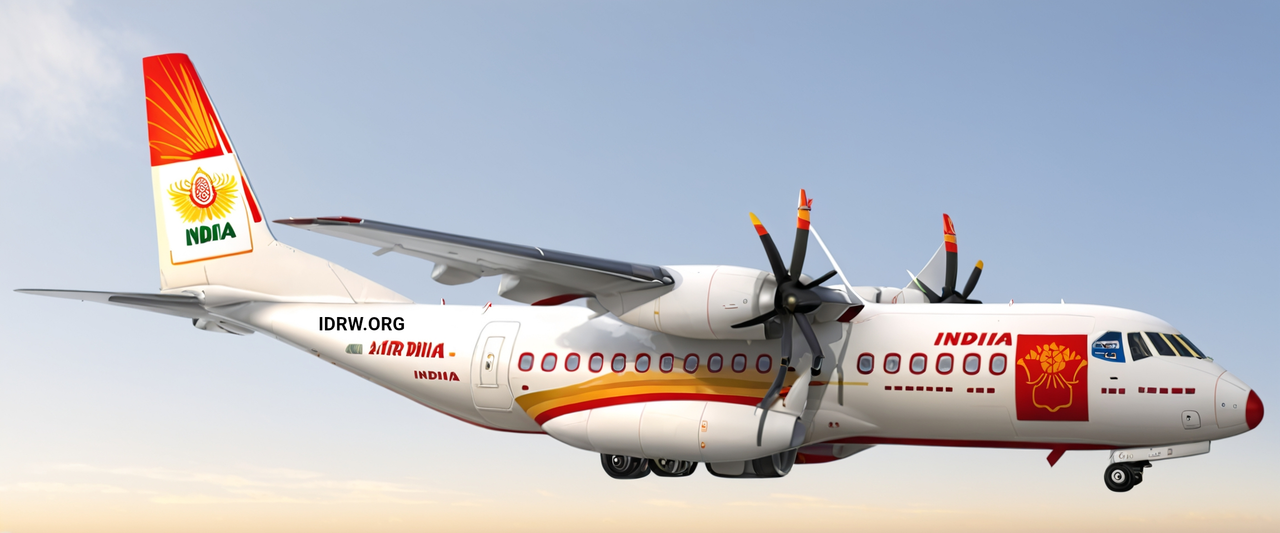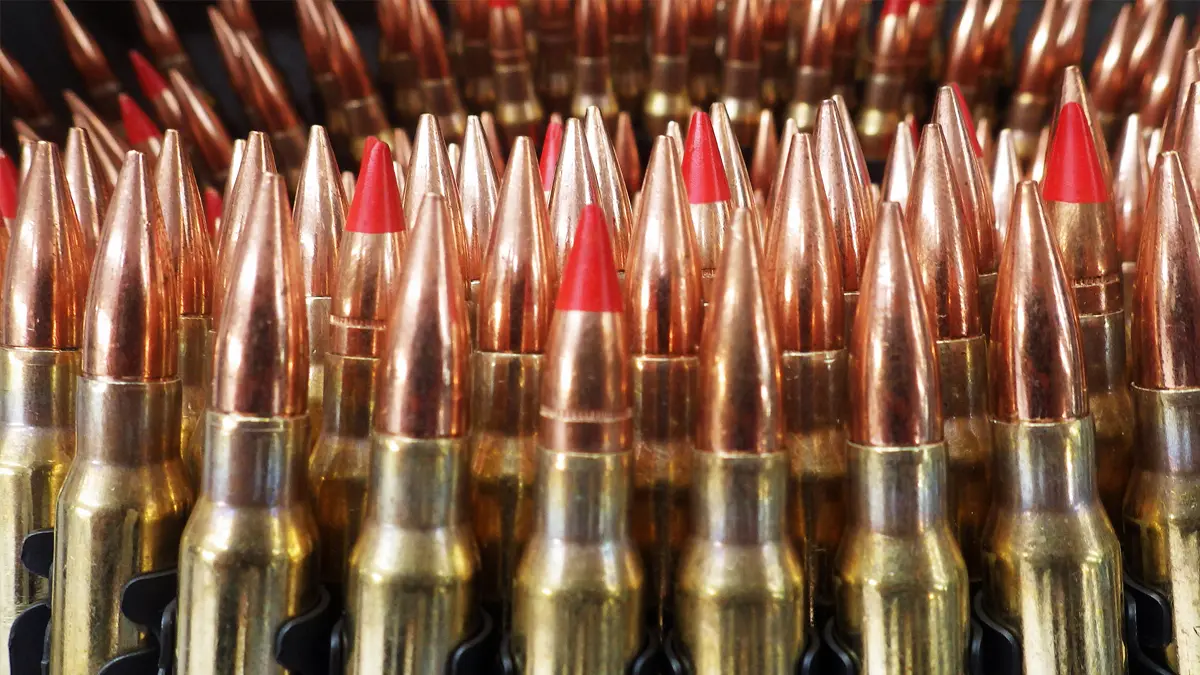AFI
SOURCE: AFI


The National Aerospace Laboratories (NAL), in its recent annual report, has highlighted a significant milestone in the development of India’s Light Combat Aircraft (LCA) Tejas Mk 2. The report confirms that NAL has successfully completed the structural design and analysis of the radome composite structure and associated parts for the Mk 2’s Active Electronically Scanned Array (AESA) radar, achieving a successful Critical Design Review (CDR).
A radome is a protective, aerodynamic cover that shields radar equipment from environmental factors while allowing radar waves to pass through with minimal distortion. For an AESA radar system, the radome must not only withstand high-stress flight conditions but also ensure minimal electromagnetic interference, which is crucial for radar accuracy and effectiveness.
Continue readingSOURCE: AFI


Mazagon Dock Shipbuilders, under the Ministry of Ports, Shipping & Waterways, has made significant strides towards self-reliance in defense manufacturing. The Mazagon Dock Shipbuilders Limited (MDL), a premier shipyard of India, has successfully indigenized Sacrificial Zinc Anode Flanges.
These critical components are essential for the corrosion protection of various onboard systems, including pipes, valves, and pumps, which are exposed to seawater. Previously, these flanges were imported from M/s Metrocontrol, Spain. However, through a collaborative effort with M/s Sargam Metals, Chennai, MDL has successfully developed and manufactured these flanges domestically.
Continue readingSOURCE: AFI


A recent report suggests that India’s any plans for follow-on purchase of 36 Rafale fighter jets from France may face delays due to a substantial production backlog at Dassault Aviation. Unlike the previous 2016 deal, when the Indian Air Force (IAF) began receiving its first Rafales within four years, the current backlog of around 180 jets ordered by other nations may push deliveries of additional Rafales for India to 6-7 years from the order date.
Dassault Aviation is currently working to clear a sizeable order book for Rafale jets from multiple countries, including Egypt, Greece, the UAE, and Indonesia. To manage these commitments, the company is operating its production line at a rate of about two jets per month, aiming to deliver around 20 Rafales annually. This moderate pace, though efficient for sustaining quality and production standards, is not sufficient to quickly address a new order of 36 jets for India within a shorter timeframe.
Continue readingSOURCE: AFI


The recent decision by the Indian Armed Forces to acquire Predator drones from the U.S. has sparked discussions about the potential of indigenous alternatives. TATA’s acquisition of the Intellectual Property (IP) rights for the Grob G 180 SPn aircraft presents India with an opportunity to develop a highly capable, cost-effective unmanned platform that could match or exceed the operational benefits offered by Predator drones. Considering this, an Indian-developed Grob G 180-based UAV program could serve the armed forces’ needs in a versatile and sovereign manner.
With TATA holding the IP rights to the Grob G 180 SPn, India gains significant freedom in tailoring the aircraft to the specific operational requirements of its armed forces. This autonomy would allow for customized adaptations across systems and subsystems without restrictions or approval from foreign manufacturers. Such a capability is essential for the Indian Armed Forces, as the aircraft could be equipped with advanced indigenous technologies, including electronic intelligence (ELINT) and intelligence, surveillance, target acquisition, and reconnaissance (ISTAR) systems, that align with India’s defense priorities. By contrast, foreign-built platforms like the Predator are often subject to export limitations and stringent controls on modifications, which can limit their flexibility in a unique and diverse combat environment like India’s.
Continue readingSOURCE: AFI


With the inauguration of Tata’s C-295 production facility in Gujarat, the Tata Group has taken a substantial step towards establishing a domestic aircraft manufacturing ecosystem in India. While the primary objective of this facility is to produce C-295 aircraft for the Indian Air Force (IAF), Tata is keenly exploring the potential to develop a civilian variant of this versatile aircraft. If the plan materializes, Air India, which is owned by the Tata Group, could be the first airline to operate this civilian C-295, adding turboprop capabilities to its fleet for the first time.
Tata’s interest in a civilian C-295 is strategic. Turboprops serve a vital role in connecting smaller regional airports and shorter runways that larger commercial jets cannot easily access. In a country like India, with a sprawling geography and many regional airports under the UDAN (Ude Desh ka Aam Nagrik) scheme, a domestically produced turboprop aircraft could fill a significant gap in regional aviation. With Tata holding the rights to produce the C-295 and its experience in manufacturing and operations, this civilian variant could be positioned as a competitive alternative for regional carriers looking to expand into underserved routes.
Continue readingSOURCE: AFI


In a recent high-level defense engagement, India extended an offer to share its expertise in local manufacturing of small arms and ammunition with Algeria. During his visit to the People’s Democratic Republic of Algeria, India’s Chief of Defence Staff (CDS) highlighted the potential for collaboration in defense manufacturing as both nations seek to strengthen military and industrial cooperation. This proposal reflects India’s broader strategic ambition to boost defense exports and foster regional partnerships through defense-industrial collaboration.
The visit by India’s CDS marks a significant step in deepening defense relations with Algeria, one of North Africa’s most strategically positioned countries. The potential partnership in defense manufacturing aligns with both nations’ mutual goals of military self-reliance and regional stability. This collaboration could see the sale of Indian-made small arms to Algeria and possibly pave the way for larger defense projects between the two countries.
Continue readingSOURCE: AFI


Vice Adm. Krishna Swaminathan, the Vice Chief of the Indian Navy, recently remarked on the state of India’s TAPAS (Tactical Advanced Platform for Aerial Surveillance) drones, noting that “the TAPAS drones in their current form do not entirely meet our requirements.” Swaminathan highlighted the Navy’s interest in acquiring MQ-9B SeaGuardian drones instead, which offer advanced capabilities that better align with the Navy’s current operational needs. However, he expressed optimism about TAPAS’s potential, stating, “We hope the next version of TAPAS will be much better. We look forward to that day when we can make such drones like the MQ-9B, and maybe TAPAS is the right way to go.”
The TAPAS UAV, developed by the Defence Research and Development Organisation (DRDO), is India’s premier long-endurance drone platform, intended for surveillance and reconnaissance missions. While the Navy and Army are keen on indigenous options, Swaminathan’s statement indicates that TAPAS requires further refinement to fully meet the Navy’s high-performance criteria.
Continue readingSOURCE: AFI


India’s recent acquisition of the MQ-9B Reaper drones from the United States has set off a wave of analysis among defense experts in Pakistan. Prominent Pakistani defense analyst Bilal Khan notes that India’s procurement of high-altitude, long-endurance (HALE) UAVs, such as the MQ-9B, may compel Pakistan to invest more in similar platforms, particularly for the Pakistan Navy (PN). Currently, Pakistan’s UAV fleet includes primarily medium-altitude, long-endurance (MALE) drones sourced from Turkey and China, and developed by its domestic defense industry. However, Pakistan lacks a comparable HALE UAV capability, which could create a strategic gap as India integrates these advanced drones into its military operations.
India’s acquisition of the MQ-9B Reapers, known for their endurance, altitude capabilities, and advanced surveillance systems, could significantly enhance its intelligence, surveillance, and reconnaissance (ISR) capabilities, particularly in maritime domains. These drones can operate at altitudes of up to 50,000 feet and remain airborne for over 24 hours, providing persistent ISR over wide areas, including critical maritime chokepoints and regions with high strategic interest. Pakistan’s current reliance on MALE UAVs, with relatively limited altitude and endurance capabilities compared to the MQ-9B, may create limitations in monitoring extended maritime areas or high-altitude regions.
Continue readingSOURCE: AFI


In a promising move for India’s aviation and Maintenance, Repair, and Overhaul (MRO) industry, the Indian Air Force (IAF) is planning to allow private airlines to use its facilities for aircraft repainting and maintenance services. This initiative aims to provide private carriers with a reliable domestic option, significantly reducing the need to fly abroad for MRO needs. With initial steps already in place, the IAF expects to finalize the contract within the next four to six months after reviewing responses from eleven Indian companies, marking a strategic collaboration between the armed forces and civilian aviation sector.
Aircraft repainting is a significant MRO service, often requiring private airlines to send aircraft to overseas facilities, incurring additional logistics and downtime. By opening its painting and maintenance facilities to private carriers, the IAF seeks to bridge a vital gap in India’s MRO sector, which is currently dominated by foreign service providers. This initiative not only reduces costs for airlines but also keeps revenue within the country, aiding the growth of domestic MRO capabilities.
Continue readingSOURCE: AFI


@nssdatta
The dual carrier fleet exercises recently conducted by both the Indian Navy and the People’s Liberation Army Navy (PLAN) have stirred interest and comparisons between the two regional powers. For the first time, each country showcased their respective twin carrier strike group (CSG) capabilities, underlining their ambitions to establish strategic maritime dominance in the Indo-Pacific. The Indian Navy’s CSG formation was led by INS Vikrant and INS Vikramaditya, while the PLAN’s formation featured the Shandong and Liaoning aircraft carriers.
Here’s a closer look at the carrier battle group (CBG) formations, focusing on their respective escorts, airpower, and strategic implications.
Continue readingSOURCE: AFI


Developing a 5th-generation jet engine is a monumental task that requires substantial investments in R&D, specialized infrastructure, and skilled engineering. For India’s Advanced Medium Combat Aircraft (AMCA) program, this endeavor will be crucial, as the project aims to create an indigenous, next-generation fighter jet with advanced stealth and combat capabilities.
To understand the potential funding requirements for India’s AMCA engine, it is helpful to compare with similar global engine development programs in countries such as the United States, the United Kingdom, France, and China, all of which have faced significant investment demands in their 5th-generation jet engine initiatives.
Continue readingSOURCE: AFI


The Twin Engine Deck-Based Fighter (TEDBF), an ambitious project spearheaded by India’s Aeronautical Development Agency (ADA) for the Indian Navy, is shaping up to be a formidable naval fighter. This indigenously designed aircraft is intended to replace India’s aging fleet of MiG-29K fighter jets and is being developed with the capability to operate from the Indian Navy’s aircraft carriers. While its design has stirred excitement for bearing a resemblance to the Rafale M—a proven naval fighter the Indian Navy is also acquiring—the TEDBF is a unique platform in its own right, tailored for India’s defense requirements and its naval operational environment. Here’s a closer look at what sets the TEDBF apart and how its design blends inspiration from the Rafale M with distinct indigenous enhancements.
The TEDBF’s design evolution showcases notable similarities with the Dassault Rafale M, particularly in terms of its frontal shape and canopy layout. The similarities give the TEDBF a sleek and aerodynamic look similar to the Rafale M, an aircraft known for its versatility and efficiency in carrier-based operations. However, the TEDBF features multiple distinguishing aspects that set it apart:
Continue readingSOURCE: AFI


Bharat Electronics Limited (BEL), a leading Indian public sector undertaking, is poised to secure significant orders for its advanced radar systems. According to company officials, orders worth Rs 2,500 crore for the Ashwini Low Level Tracking Radar (LLTR) and Rs 2,000 crore for the Atulya Forward Area Air Defence (FAAD) system are expected to be finalized within the next 3-4 months.
The Ashwini LLTR is a highly mobile radar system designed to eliminate radar blind spots caused by terrain. This cutting-edge technology can detect objects moving at speeds of up to 1 km/s at altitudes of 15 km, with detection ranges of 200 km and 50 km for targets with radar cross-sections of 2 sq m and 0.2 sq m, respectively. It has the capability to track up to 200 targets simultaneously.
Continue readingSOURCE: AFI


The Indian Navy recently showcased an advanced Autonomous Underwater Vehicle (AUV) equipped with a novel Sunflower Propeller at the Swavlamban 2024 exhibition. This is the first time such a propeller has been observed on an Indian Navy AUV, marking a significant step in India’s underwater technology. The Sunflower Propeller offers unique advantages that enhance the AUV’s maneuverability, efficiency, and stealth capabilities, making it well-suited for a range of naval operations, from reconnaissance to mine countermeasures.
The Sunflower Propeller is an innovative design featuring multiple, finely curved blades arranged in a circular pattern, resembling the petals of a sunflower. Unlike traditional propellers, which typically have two to four larger blades, the Sunflower Propeller has a larger number of slender, overlapping blades that allow for precise control and reduced noise levels. The design focuses on improving thrust efficiency while minimizing cavitation, the formation of vapor bubbles that can create noise and reduce efficiency underwater.
Continue readingSOURCE: AFI


Tejase Aerosense Pvt Ltd, a Mumbai-based aerospace technology firm, has been recognized for its innovative work in the field of aerospace technology. The company has been awarded the prestigious ‘Dare to Dream 4.0’ award during the Workshop on Defence Technology Acceleration (TWARAL) organized by DRDO Bhawan.
This recognition is for the development of a Fuel System-Temperature Transducer for Aircraft Applications on behalf of the Aeronautical Development Agency (ADA).
Continue reading